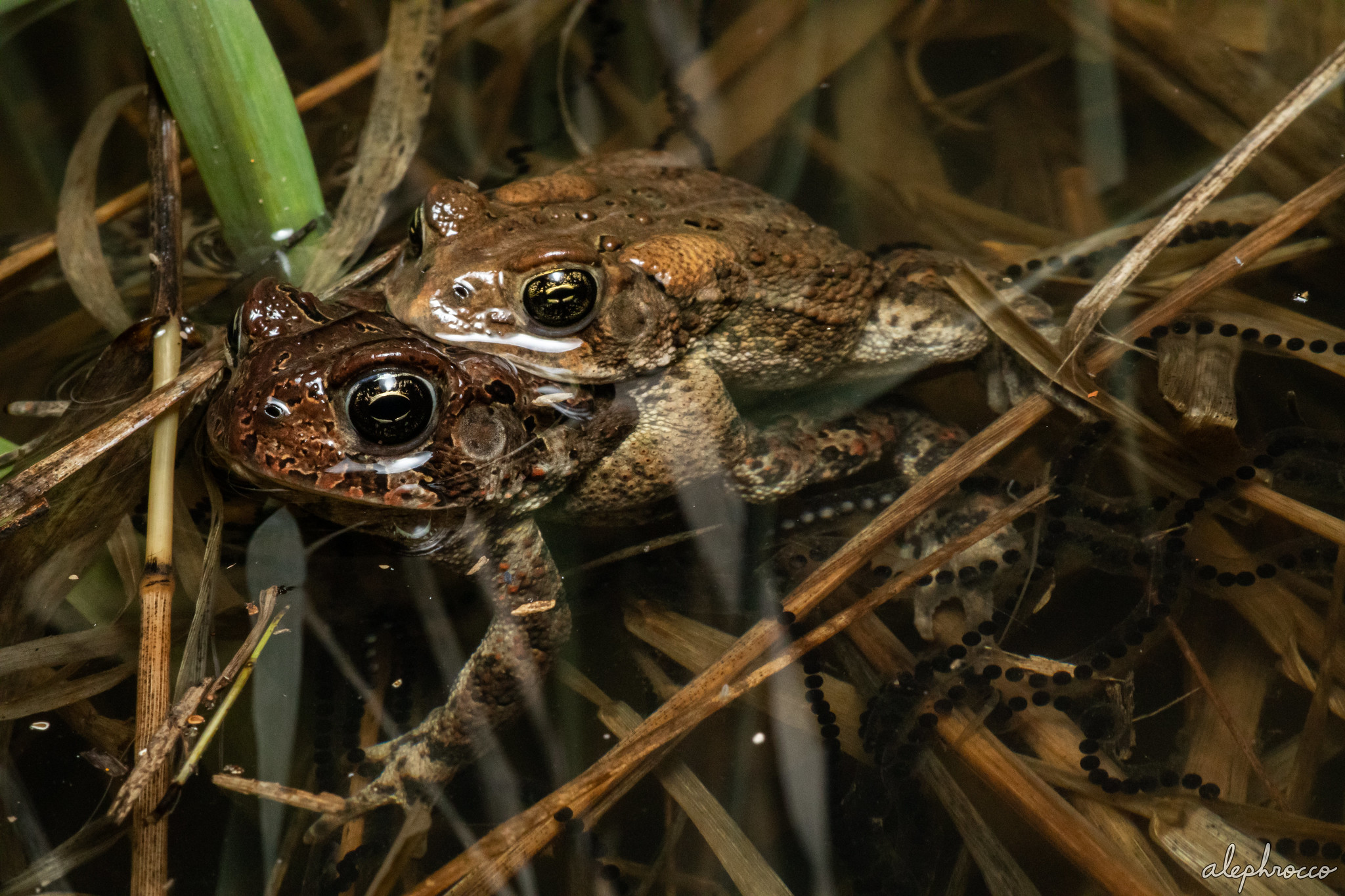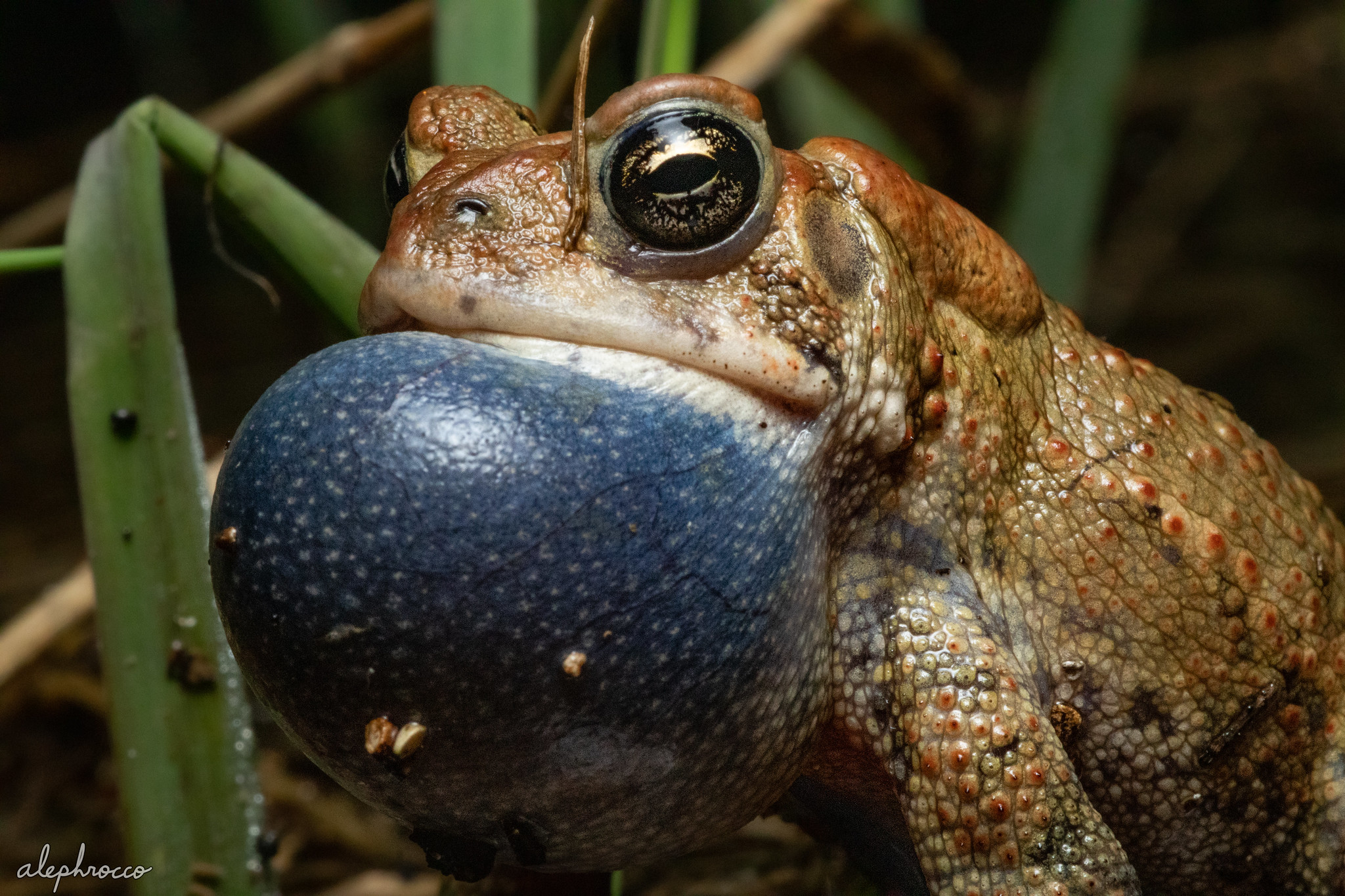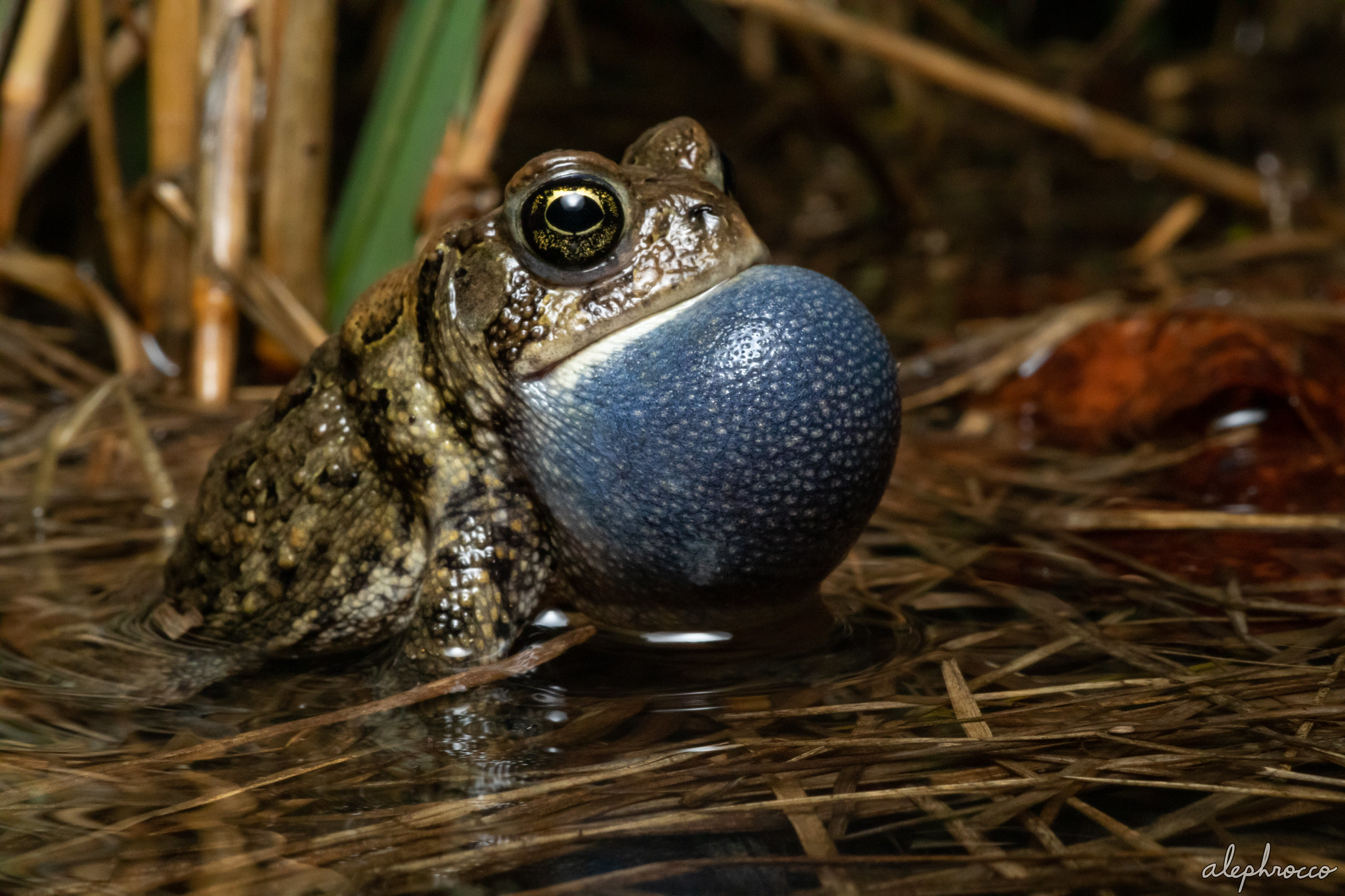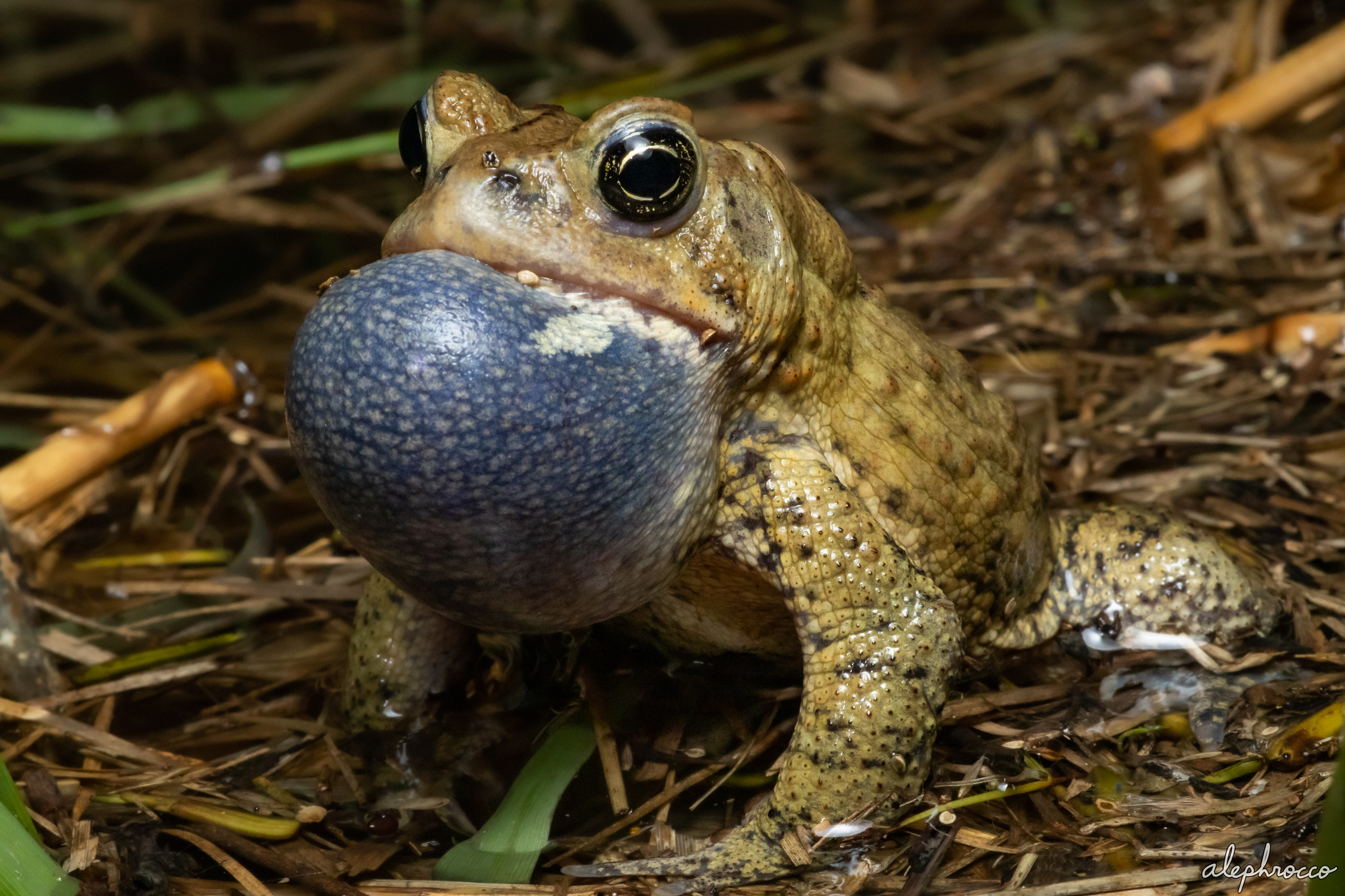
A male American toad (Anaxyrus americanus) trills loudly, lying in wait to pounce and embrace a female that wanders by. The oscillogram above depicts a 3.5-second interval of one of its calls [10.5 second duration, trill rate ~23 pulses/sec, mean frequency ~1.875 kHz]. Males are able to sustain calls for much longer, but are often interrupted by neighbor males that initiate calling or physical disturb them. During these breeding aggregations, females will hone in to calling males and approach until direct contact. Males will then use specialized nuptial pads on the front feet to grasp and secure their position in amplexus. Males are so motivated that they will hug almost anything that touches them. This includes other males, males already in amplexus, and even my finger when I stoop down to catch them. However, once a male realizes it is in contact with another male (and not a female, as intended), these interactions often turn into combat— males wrestling in circles and capsizing one another while floating in the shallow pools.
All toads photographed in situ [1]
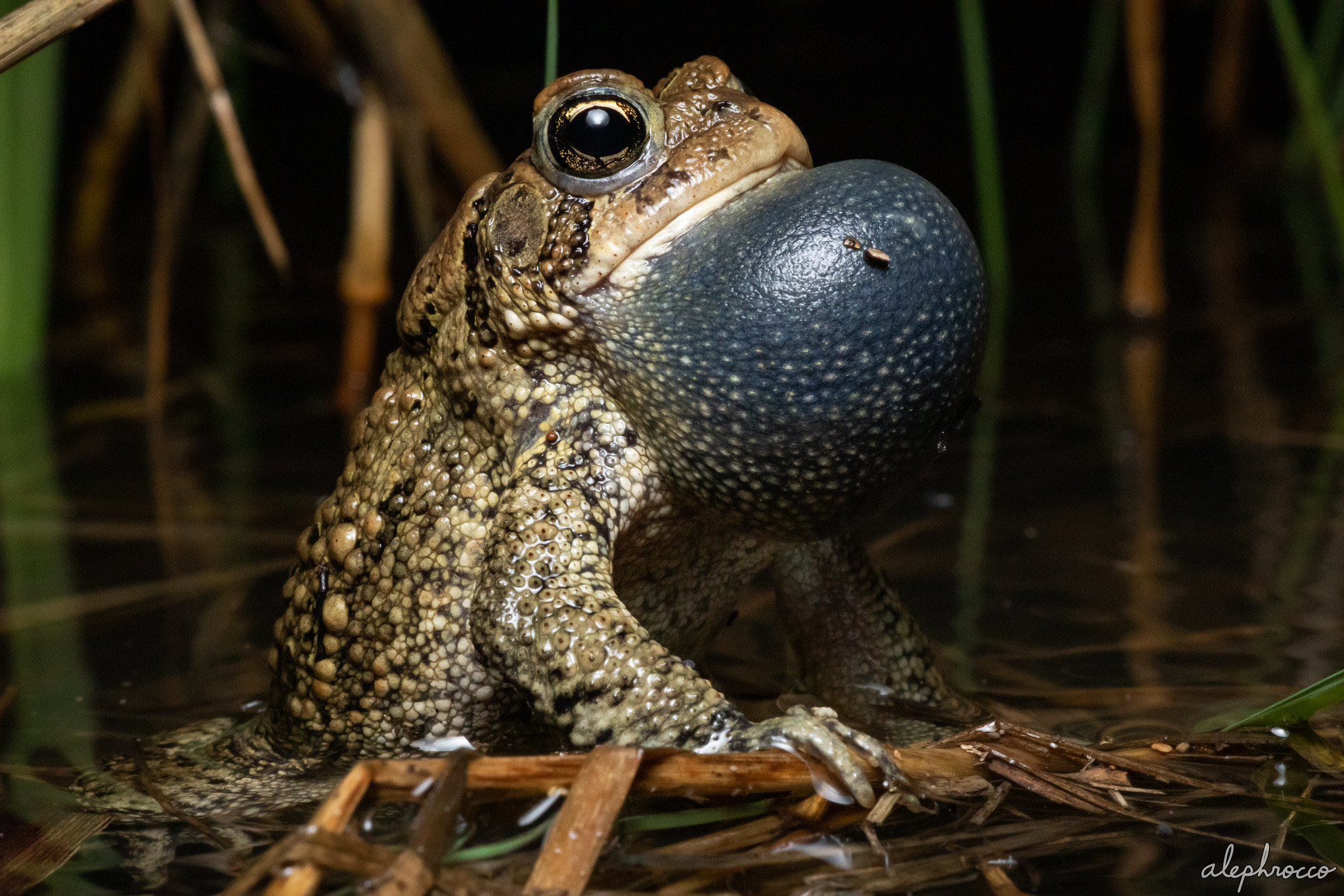

Instead of hopping away, this male toad (pictured above) walked along the sidewalk, pausing repeatedly with its muscular legs outstretched. Maybe this is an antipredator strategy to appear larger and taller? Its body also seemed somewhat inflated. I’ve observed other toads puff up dramatically and position their dorsum opposite to me, but I’m not sure if this behavior is related. Alternatively, the toad might have not perceived me as a threat and felt comfortable with a walking gait.
Color variation in one population of American toads below:
